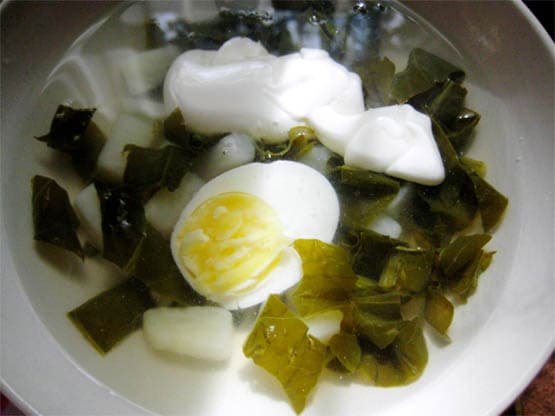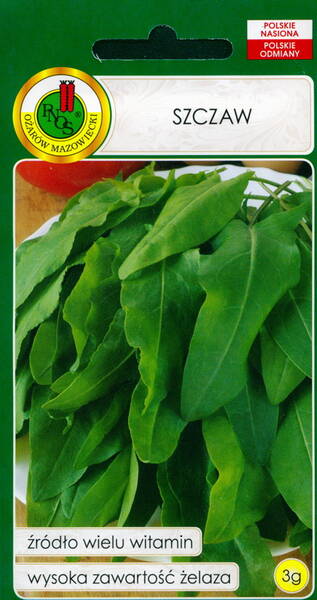Winter-hardy, high-yielding, early maturing variety (45-50 days from the beginning of spring germination). The variety is resistant to adverse weather conditions.
Erect rosette, leaf length 12-14 cm. The leaf plate is smooth, the edge is wavy. The variety is resistant to stem stemming.
Sorrel is a perennial, winter-hardy and shade-tolerant crop, demanding on moisture. Grows well on fertile, slightly acidic or neutral soils.
Sow in early spring or summer to a depth of 1.0-1.5 cm with 20-25 cm row spacing.
Leaves that have reached a length of 10-12 cm are cut off. A total of 4-5 harvests are carried out with an interval of 2-2.5 weeks.
The yield of greenery per season is about 7 kg / m2. In one place, it gives high yields for 3-4 years.
1 g contains 300-400 seeds.

* Sorrel. The historical significance of sorrel is determined by its high content of vitamin C, which used to be excellent in the fight against scurvy.
Fleshy juicy sorrel leaves contain up to 3% protein, 2.8% carbohydrates, various minerals, carotene, vitamins C, B1, B2, A, PP, malic and citric acid.
Young leaves are of the main value. Oxalic acid, which is harmful to the human body, accumulates in old leaves during the period of the beginning of the formation of flower stems.
Oxalic acid binds calcium in large quantities, so that its level in the blood drops, which can lead to impaired salt metabolism and renal pathology.
However, as a delicate seasoning, in moderation, sorrel deserves a worthy place in both folk and gourmet cuisine.
When preparing a dish with sorrel, add milk or dairy products to convert soluble oxalic acid into insoluble, converting it into rather harmless calcium oxalate.
Terms and methods. The harvesting of leaves begins in early May, when their length reaches 10 cm, and ends in late June-early July.
For the future, they are salted like cabbage or canned in jars in the form of mashed potatoes. Seeds are harvested in late July and early August.
Sorrel culture. Sorrel is grown in garden beds or in a garden.
To obtain greenery next spring, seeds are sown in June, embedding them to a depth of 2-3 cm. Care is the same as for salad plants.
Eng.: Sorrel. Suom.: Niittysuolaheinä. Sven.: Ängssyra.
* Scrambled eggs with sorrel. Wash sorrel, chop finely, add sautéed onions, beaten eggs, salt, mix, bring to readiness and sprinkle with chopped parsley.
* Sorrel casserole. Sorrel leaves are washed, boiled, passed through a meat grinder. Add fried onions, flour, sorrel broth, milk or meat broth. Put on fire and, stirring, bring to readiness. Add butter and grated cheese to the resulting puree.
Slices of fried bread are placed on the bottom, sorrel is placed on the bread, sprinkled with breadcrumbs mixed with cheese, and baked in the oven. Served in a mold.
For 1 kg. sorrel - 2 tablespoons. tablespoons of grated cheese, 1 glass of sorrel broth, milk or meat broth, 1 onion, 1 table. a spoonful of butter, 1 tsp. a spoonful of flour, 4 slices of white bread, 1 table. a spoonful of ground crackers, salt to taste.
* Sorrel puree.
Sorrel leaves are washed, blanched for 3-4 minutes and rubbed through a sieve. Mashed potatoes are placed in an enamel bowl, heated over low heat to a temperature not lower than + 90 ° C, packaged in sterile jars (0.5 liters), covered with lids, sterilized for 40 minutes, sealed and cooled.
* Canned sorrel. Fresh sorrel leaves are thoroughly washed, blanched for 1-2 minutes, placed tightly in sterile jars (0.5 liters) and poured with hot water in which the sorrel was blanched. The filled cans are covered with lids, sterilized for 1 hour, hermetically sealed and cooled.















